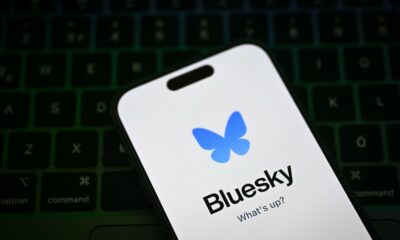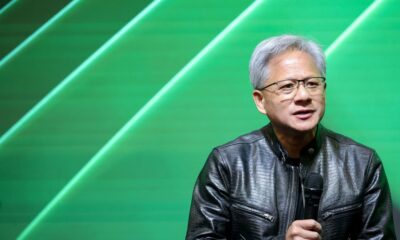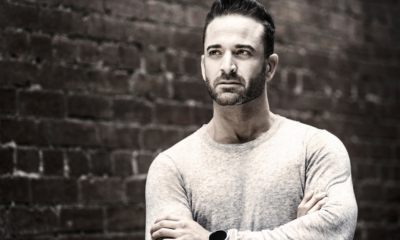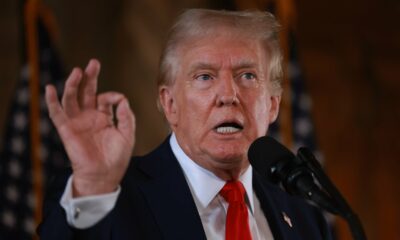SOCIAL
Musk Cuts Staff, De-Lists Twitter from the Stock Exchange on Day 1 as Chief

So, Elon Musk is now the ‘Chief Twit’ as he says, with the billionaire taking ownership of the platform late Thursday, and for now at least, appointing himself as interim CEO. Whether he stays on as chief, or appoints somebody else to that role, remains to be seen, but thus far, it does appear as though Musk plans to take a hands-on role in re-aligning the app in his vision.
Though what exactly that vision is remains unclear.
Musk’s first order of business was to fire several top execs, including CEO Parag Agrawal, clearing house of those whom he clearly didn’t get along with throughout the takeover process. Among them was also the platform’s head of policy Vijaya Gadde, who’s played a key role in many of Twitter’s biggest moderation and safety decisions over the past 10 years – it was Gadde, for example, who made the call to ban former US President Donald Trump from the app.
The loss of so much experience will hurt the company, no doubt. But Musk, of course, has an alternative view on what Twitter should be, so they were unlikely to ever see eye-to-eye anyway. And the departing execs will take home millions in payouts, which should soften the blow, before they’re re-appointed at another tech firm in similar roles.
Musk’s second key order of business, however, following those initial exec cuts, was to take Twitter private.
As reported by The New York Times:
“As part of buying Twitter, Mr. Musk is merging the social media company with X Holdings, a corporate entity that he established in Delaware to handle the deal. X is buying out all of Twitter’s stock and will control the service, and Mr. Musk will control the holding company. Twitter will be delisted from the New York Stock Exchange and its shares will no longer trade on public markets as of Nov. 8, according to a securities filing.”
Thus, Twitter will no longer be a listed entity, and will no longer have to provide performance updates, so we won’t know exactly how many users Twitter has, how its latest subscription tools are performing, how its costs and expenses are rising. Some of these details will still be available, but they won’t be officially reported every quarter, which will reduce insight into the Musk Era at the app.
De-listing will also see the dissolution of Twitter’s current board of directors, with Musk to appoint a new board at some stage. Who he appoints here could also point to his future plans, which, again, remain relatively vague, outside of a few key hints.
To recap, Musk has said, or at least implied, that his priorities will be:
- Eliminating bots
- Expanding the rules around what users can say in the app (within the law)
- Open sourcing feed algorithms
- Increasing paying subscribers
Each of these elements will have variable impacts, though more recently, Musk has also sought to reassure advertisers that there won’t be any major changes to how they operate, as a means to keep that income stream flowing.
But eventually, Musk wants to reduce the platform’s reliance on ads, and make subscriptions a bigger part of Twitter’s income.
In one exchange with Twitter employees this week, Musk reiterated his plan to boost subscription intake to 50% of the platform’s revenue, which he also views as a potential solution to the app’s bot problem.
Musk has floated this concept in the past, that by lowering the price of Twitter’s subscription offering Twitter Blue to $2 per month, and giving every paying subscriber a blue checkmark (or similar marker), that would make it less tenable for bot companies to keep making more profiles, because eventually, all the real human accounts would be verified, making the bots easier to spot.
But as with almost everything that he says, Musk has switched his thinking on this too:
Twitter will always be free for casual users, but maybe a slight cost for commercial/government users
— Elon Musk (@elonmusk) May 3, 2022
Maybe, then, Musk simply plans to start charging businesses to use the app – though that could also be a hard sell if, as expected, he starts bringing back previously banned users, like Trump, with a range of advertisers already planning to boycott the app if that happens.
It’s impossible to know the direction that Musk will take things, because I don’t think he knows, while Musk habitually revises his thinking, then denies that he ever suggested anything else.
In any event, we’ll likely have to wait for a little bit longer to see what’s coming, because Twitter has paused all site changes till November 1st due to the Musk takeover, and the potential for rogue employees to make changes on the way out the door.
But some staff are already being let go, and Musk could reinstate any user at any time. Right now, Musk says that he’s ‘digging into’ Twitter’s bans and shadowbans, to get the bottom of what’s happening on this front.
After that, nobody knows what will come next for the app.
UPDATE: Musk says that Twitter will form a new ‘content moderation council’ to decide on what can and can’t be posted to the app.
Twitter will be forming a content moderation council with widely diverse viewpoints.
No major content decisions or account reinstatements will happen before that council convenes.
— Elon Musk (@elonmusk) October 28, 2022
Which sounds a lot like Meta’s Oversight Board, which provides alternative means to review the decisions of Meta’s moderation team. The Oversight Board even reviewed the company’s decision to ban former US President Donald Trump (and found it to be the right one), which, seemingly, will be one of the first tasks allocated to Musk’s similar council, which will be established, presumably, soon.
Again, it seems like a bit of a back-track from Musk, now that the reality of dealing with proper content moderation is in his lap. Musk has loudly and repeatedly criticized Twitter’s past moderation efforts, and while the council approach is likely the right way to go, in ensuring independent experts are consulted to advise on such, as opposed to just going free for all, it’s still a shift from his gung-ho approach from the peanut gallery.
I’m also not sure that it bodes well for Musk’s future plans for the app. Most of the ideas that Musk has touted for reforming Twitter, and building it into a social media powerhouse, have been tried and tested many times before, by every other app in the space. Musk has suggested making Twitter more of a utility tool, like Chinese messaging apps, he’s suggested replicating the addictiveness of TikTok by updating Twitter’s algorithms, he’s talking about getting more people to pay to use the platform.
Like, yeah, every social app has considered these ideas, every platform has tried these things at different times. They haven’t worked.
The fact that Musk, once again, is falling back on concepts that have been already been tried doesn’t seem to suggest that he’s going to be bringing a lot of fresh takes to the app.
As per Musk, no major decisions on reinstatements, like the unbanning of Donald Trump, will happen before the council is established. So you’ll have to wait a little longer for the next stage.



















You must be logged in to post a comment Login